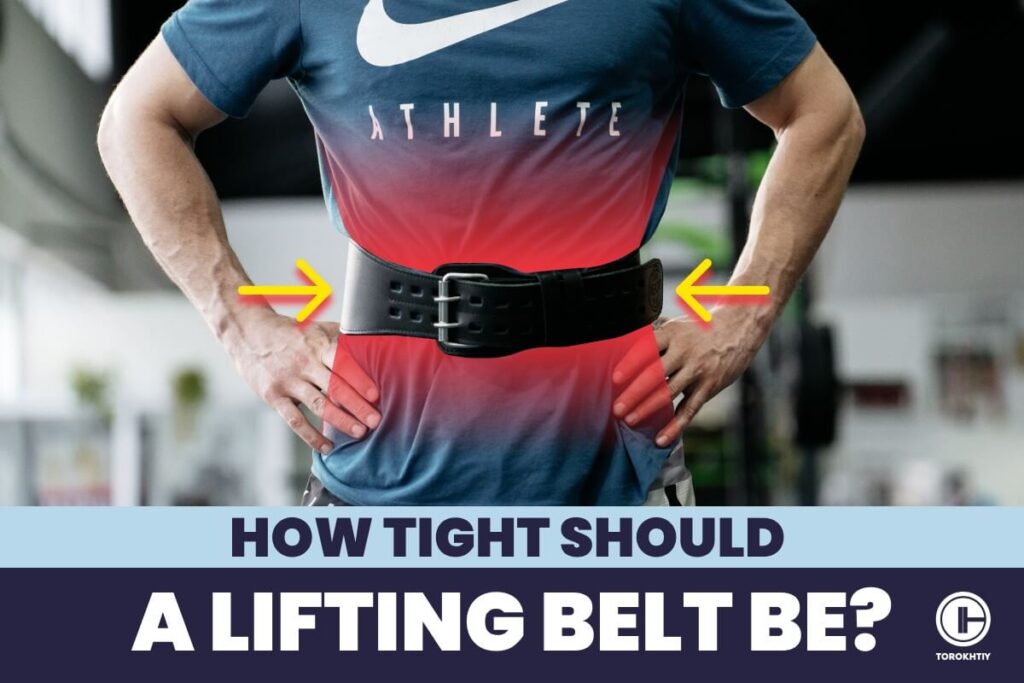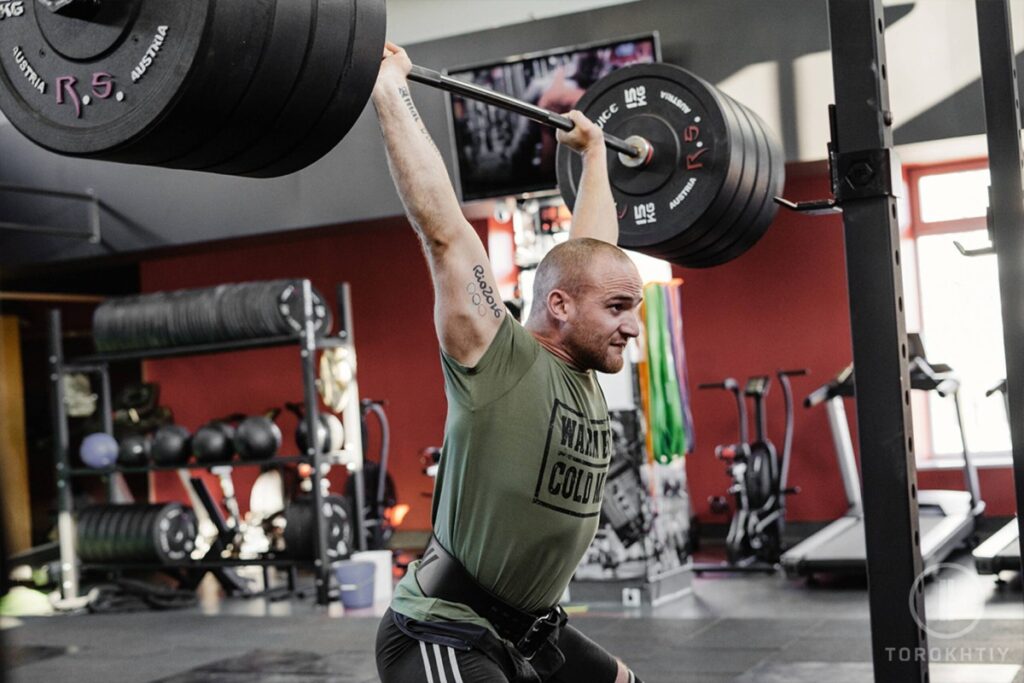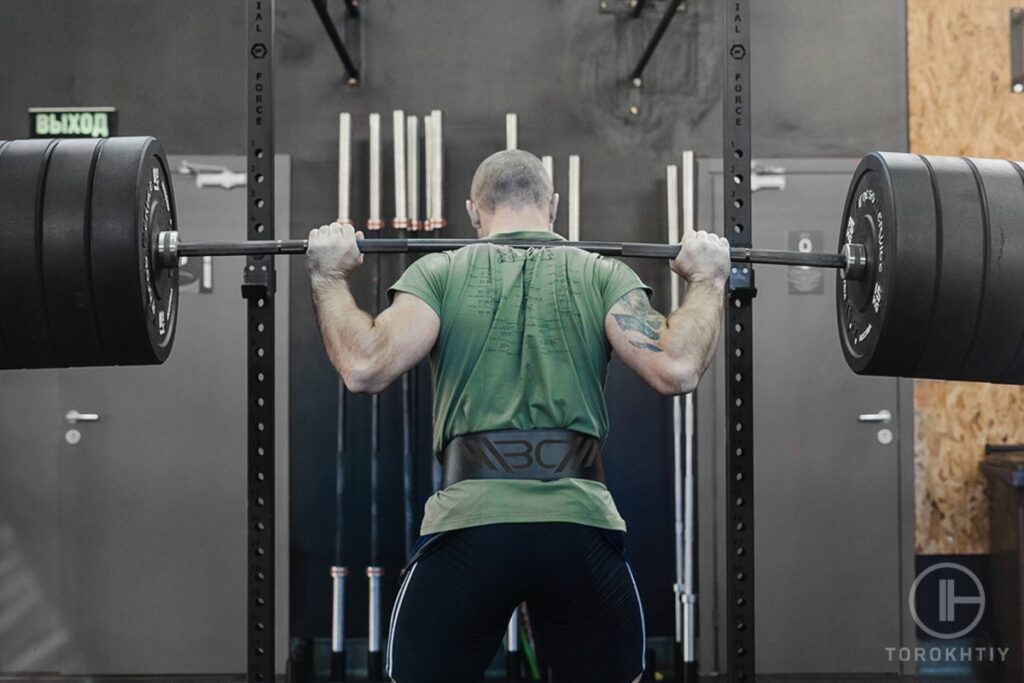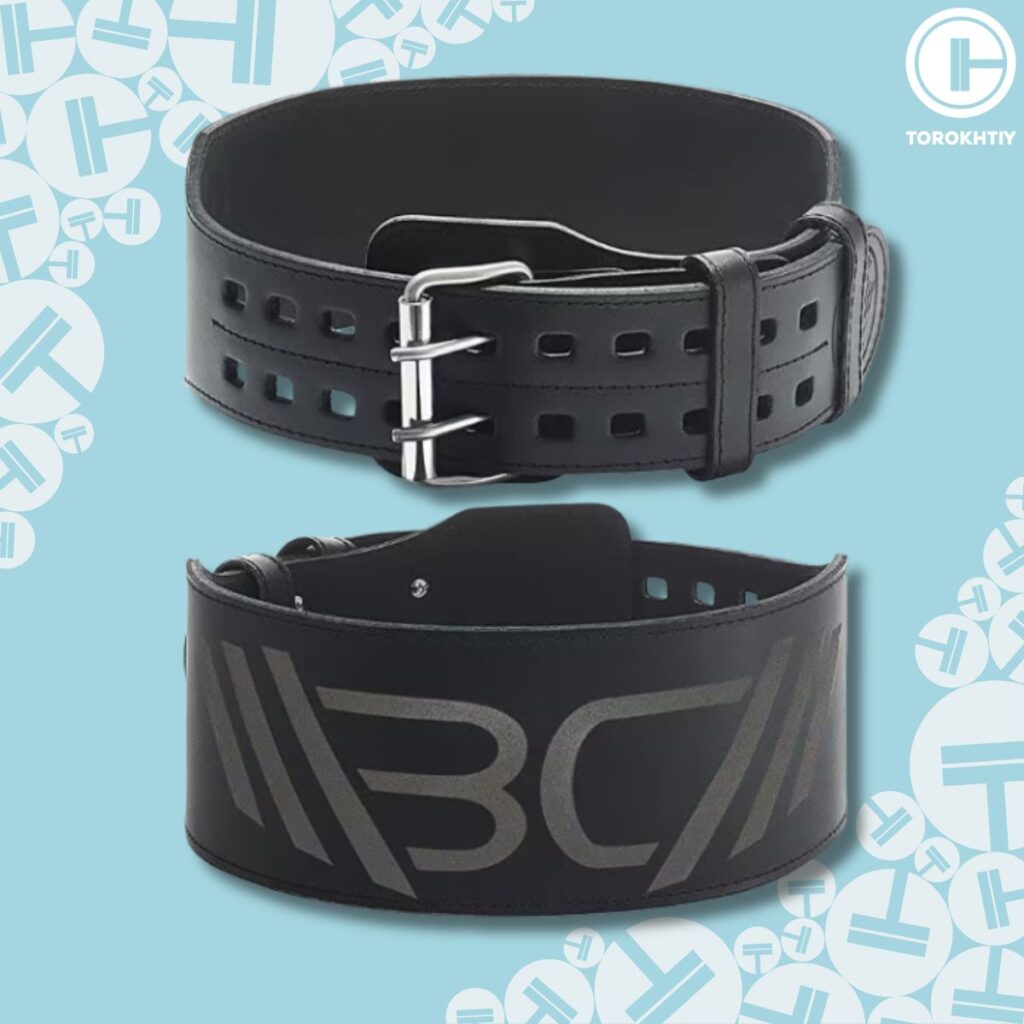How Tight Should a Weightlifting Belt Be: A Detailed Guide
Author:
Unlock your full potential by engaging with our experts and community! Have questions about your fitness journey or looking for expert advice on weightlifting techniques? Don’t hesitate — leave a comment below and Oleksiy Torokhtiy will provide a personalized answer and insights to help you reach your goals.
Torokhtiy is reader-supported. Some links are affiliate links, and we may earn a commission at no extra cost to you. See our disclosure page for details.
One of the most easily misused lifting gear is the weightlifting belt. It serves as a tool to increase intra-abdominal pressure to support your torso, however, getting the right fit can be tricky. Knowing how tight should a weightlifting belt be is vital to maximizing your training.
There are many factors that affect how should a lifting belt fit such as the lift you’re doing and the type of belt you have. But generally, the belt should be tight enough so that you feel your abs pushing against it and loose enough so you can breathe and brace your core without problems.

What Factors Affect Belt Tightness?
1. Material
While there are far more lifting belt material variations, the majority boils down to either leather or nylon. Leather belts are typically on the thicker side and they provide more rigidity and tightness to the torso, given their stiffer build. On the other hand, nylon belts are thinner and are more flexible which allows a greater range of motion.
Since leather lifting belts have a thicker build, they offer more tightness and durability to support higher pressure and resistance.
2. Closure Type
The buckle type is an important consideration that affects the tightness of the belt. Generally, there are two types of buckles for leather lifting belts: prong and lever. Prong buckles are the more classic variant while the lever buckle is the newer type of closure.
While both closure types provide excellent support, lever belts offer a tighter fit compared to belts with prong buckles. Lever belts are also easier to don and doff which makes your belt the least of your worries when prepping for that big lift.
3. Thickness
Belts vary in thickness and whether a belt is thick or not, each type serves a purpose. Ultimately, a thicker belt offers greater rigidity and tightness to the spine. This is especially great for heavier and more static lifts such as deadlifts and squats.
On the other end of the spectrum, a thinner belt works best for more dynamic movements such as snatches and clean & jerks due to its less restrictive nature.

How Tight Should a Lifting Belt Be?
The pre-requisite to identifying the ideal belt tightness is to first learn how to properly put a belt on and try bracing with it. Simply wrap the belt around your waist, ensuring that it’s midway between the bottom of your ribs and the top of your hip bone.
Then, take a deep diaphragmatic breath and fasten the belt in place. If there is a moment when the belt should be tight – this is the moment. If the belt would be loose here it means it won’t give you extra IAP (intra-abdominal pressure).
Think of your trunk like a can or metal barrel you would like to put more air in. The only way would be to increase the pressure inside because the container won’t expand.
Now that the belt is on, you should be able to breathe properly and completely without the belt resisting your breathing.
Brace your core about 5 times and check if you’re getting adequate support and resistance. You may also try to tighten or loosen up the belt and check which fit works best for you.
The general rule is the tighter the belt, the harder it is to brace, and the looser the fit, the less support you feel. With time you will see that some lifts or even same lifts with different weights will require different belt setup. Experience comes with time.
However, belt tightness isn’t as simple as that. The type of exercise you do may also affect the way your belt fits. So the question now is: how should a lifting belt fit in different exercises? Let’s take a look!
1. Deadlift
I personally like a looser fit than usual when I do some deadlifts because going into the hinge position makes it feel really tight – so tight that bracing no longer feels as profound as I’d prefer. For the same reason, raising the belt a bit higher up closer to the waistline provides more comfort without sacrificing support.
Another option if you feel uncomfortable is to choose a belt that is wider in the back but narrower in the front.
Also read: Deadlift Belt Position Guide
2. Squats
Like me, most people prefer a tighter belt fit when it comes to squats. The belt can be also worn lower than usual towards the hip bones. However, be careful not to overtighten it as this may lead to a lift failure.
Try performing a squat and check how much your belly expands at the bottom of the movement and check if the belt fit feels just right. If the fit is too tight, you may start losing abdominal tension which may lead to a reduction in lifting power, so be cautious about that.
3. Bench Press
Not every powerlifter wears a belt when performing a bench press, but the majority of the best bench pressers when they lift maximal weights use one… and that says a lot! When bench pressing heavier weight, a weightlifting belt provides additional support to the bench press arch and possibly help with a leg drive but that one is debatable.
Since the bench press exercise requires no dynamic movement from the torso, fasten your belt like for a squat and then experiment with different setups – try one hole less and one more. That being said most of your bench pressing should be done without a belt anyway.
4. Snatch
Snatching involves relatively big movements so a looser fit should work best for this exercise. This will give more room for breathing and position changes. And since this is a highly dynamic lift, it would be beneficial to opt for a more flexible material (thinner belt).
5. Clean & Jerk
Although the clean & jerk is an extremely dynamic exercise like the snatch, the former induces greater load to the spine as you “squat” the weight up. For this reason, the same ideal tightness does not apply to both.
In fact, I prefer my belt tighter while lifting a clean & jerk – even tighter than when I do my squats. You may begin by doing the movement with your belt fastened the same way you would for a squat, and tighten up until it feels right.
Editor’s Pick: My personal favorite is Warm Body Cold Mind’s Leather Weight Lifting Belt. It gives me the comfortable support and resistance I need to be able to lift more. The pads tremendously help with comfort too. So far, it’s the most durable lifting belt I’ve ever used.
WARM BODY COLD MIND Leather Belt
Common Belt Tightness Mistakes
❌ Fastening the Belt Without Taking a Deep Breath
When donning your belt, it’s important that you leave enough room for bracing and breathing. The best way to do this is to clasp the belt as you inhale deeply, protruding your abdomen out. This way, you reduce the chance of over-tightening your belt.
Fastening your belt as you exhale will leave you with a belt that’s so tight that you won’t have enough room to generate tension – and worse – breathe.
❌ Ignoring the Bloating
The size of our abdomen can fluctuate significantly within a single day and that’s absolutely okay! This is how we, humans, were built. So unless you’re consistently eating right and you’re working out around the same time of the day, be ready to loosen that belt up once in a while.
If you’re the type whose waist size fluctuates often, it may be best to opt for prong or velcro belts that are easier to adjust. Well, that’s unless you’re ready to go through the hassle of adjusting a lever belt all the time.
❌ Leaving Out Digestive Problems
Indigestion and a tight belt don’t work well together. If you’re not feeling your hundred percent, you might want to ensure that it’s not a digestive issue. A belt that’s too tight can exacerbate indigestion or heartburn.
I understand that you went in for a great workout and that you need that tightness to perform better lifts, however, it’s perfectly fine to loosen that belt a bit if it means you’re not going to make any digestive issues worse than they already are.

❌ Not Really a Tightness Issue but… Wearing a Belt When You Don’t Need To
Quite common mistake I see with folks is that they use belt correctly but when they should not use one at all. Belt is designed to provide extra support – when it’s needed. That means you should wear the belt when you are lifting around 75% or more of your 1 REP MAX.
Everything below should be done without a belt to allow you to improve the strength of your core. It’s support, not substitute for your core strength. When lifting lighter weights, the belt can serve as a tactile cue to see if you are bracing properly.
FAQ
How Do You Know if Your Weightlifting Belt Is Too Tight?
There are various ways that can signal you that your belt is way too tight. For one, if it significantly limits your mobility and hinders you from taking a full and deep breath, it’s time that you loosen it up. Additionally, if it’s too uncomfortable that you can’t wait to take it out, then chances are it’s too tight.
Why Do Weightlifters Wear Tight Belts?
Weightlifters wear belts for numerous reasons. Lifting belts provide support and stability during heavy lifts while reducing the stress on the spine. They also allow for safer biomechanics by preventing excessive spinal movements. And by allowing your core to generate more tension, the belt has the power to boost your overall performance.
How Do You Break in a Lifting Belt?
You can’t expect to break in your belt in just a couple of days, but there are different methods you can do to speed up the whole process. You can wear it as much as you can, heat it up, roll it up really tightly, or apply softening agents such as petroleum jelly or olive oil. Patience is key and with a little bit of help from these methods, you’ll find your belt comfortable to use in no time!
Conclusion
The tightness of weightlifting belts isn’t one size fits all. It may vary from one person to another and with the different exercises as well. If you’re still trying to figure out how should your lifting belt fit, feel free to use this guide I created for you.
Any questions? Suggestions? Let us know in the comment section below!
Have a strong grip and never leave liquid chalk open!
Also read:
- When to Start Using a Lifting Belt
- Powerlifting Belt vs Weightlifting Belt
- Best Weightlifting Belt
- Best Weight Lifting Belt for Women
- Best Weight Lifting Belt for Big Guys
- Best 3 Inch Weightlifting Belt
- What Does A Weightlifting Belt Do
- Cluster Workout
References:
- https://journals.lww.com/acsm-csmr/fulltext/2012/03000/upper_gastrointestinal_issues_in_athletes.14.aspx
- All photos are made by our Torokhtiy Media Team
Why Trust Us?
With over 20 years in Olympic weightlifting, strength training, nutrition coaching, and general fitness our team does its best to provide the audience with ultimate support and meet the needs and requirements of advanced athletes and professional lifters, as well as people who strive to open new opportunities and develop their physical capabilities with us.
By trusting the recommendations of our certified experts in coaching, nutrition, and sports training programming, as well as scientific consultants, and physiotherapists, we provide you with thorough, well-considered, and scientifically proven content. All the information given in the articles concerning workout programming, separate exercises, and athletic performance, in general, is based on verified data.
The product testing process is described in more detail here.
Author: Oleksiy Torokhtiy
Olympic Weightlifting Champion
Best Results: Snatch – 200 kg,
C&J – 240 kg
Oleksiy Torokhtiy is a professional athlete boasting 20 years of experience in Olympic weightlifting. With multiple European and World titles under his belt, he has showcased his prowess in two Olympic Games (Beijing 2008 and London 2012). Upon concluding his illustrious career, Oleksiy dedicated himself to coaching. By 2022, he had conducted over 200 weightlifting seminars worldwide. He is the visionary behind an international sportswear and accessories brand known for its motto, “Warm Body Cold Mind.” Additionally, he is an esteemed author and the creator of a series of training programs and eBooks.




Still have questions after reading our article? Unlock your full potential by engaging with our experts and community! Don’t hesitate — leave a comment below and Oleksiy Torokhtiy will provide a personalized answer and insights to help you reach your goals.